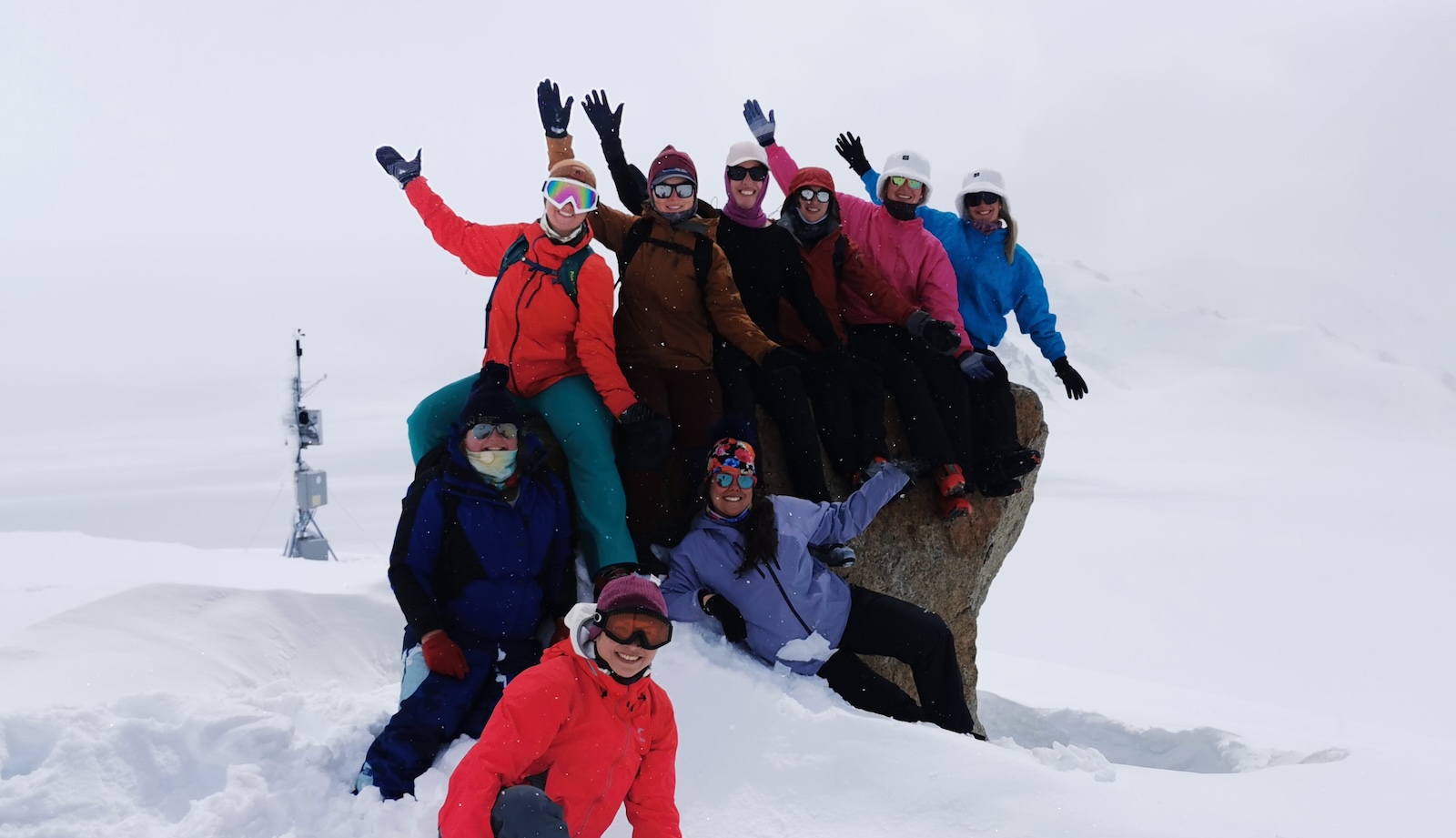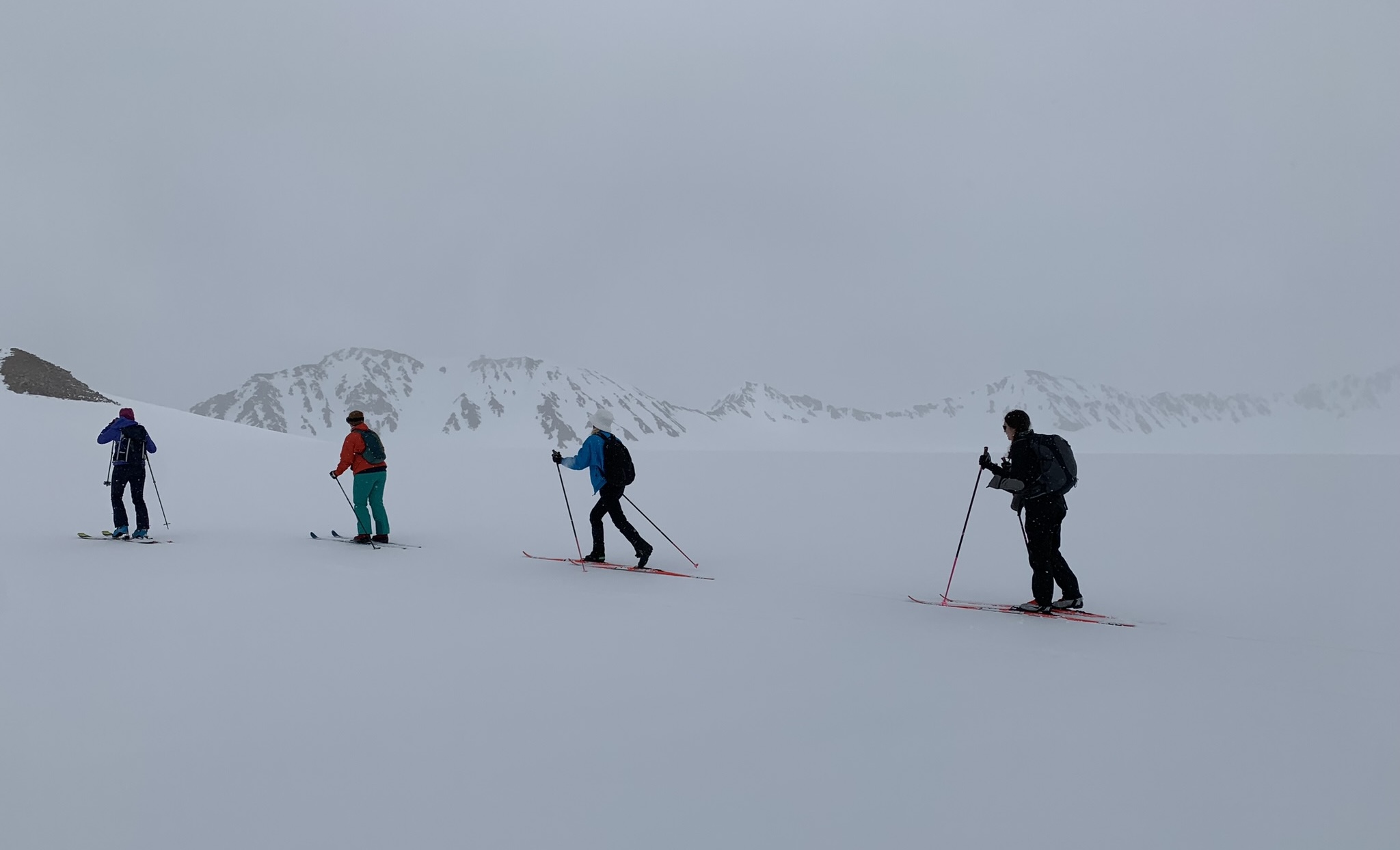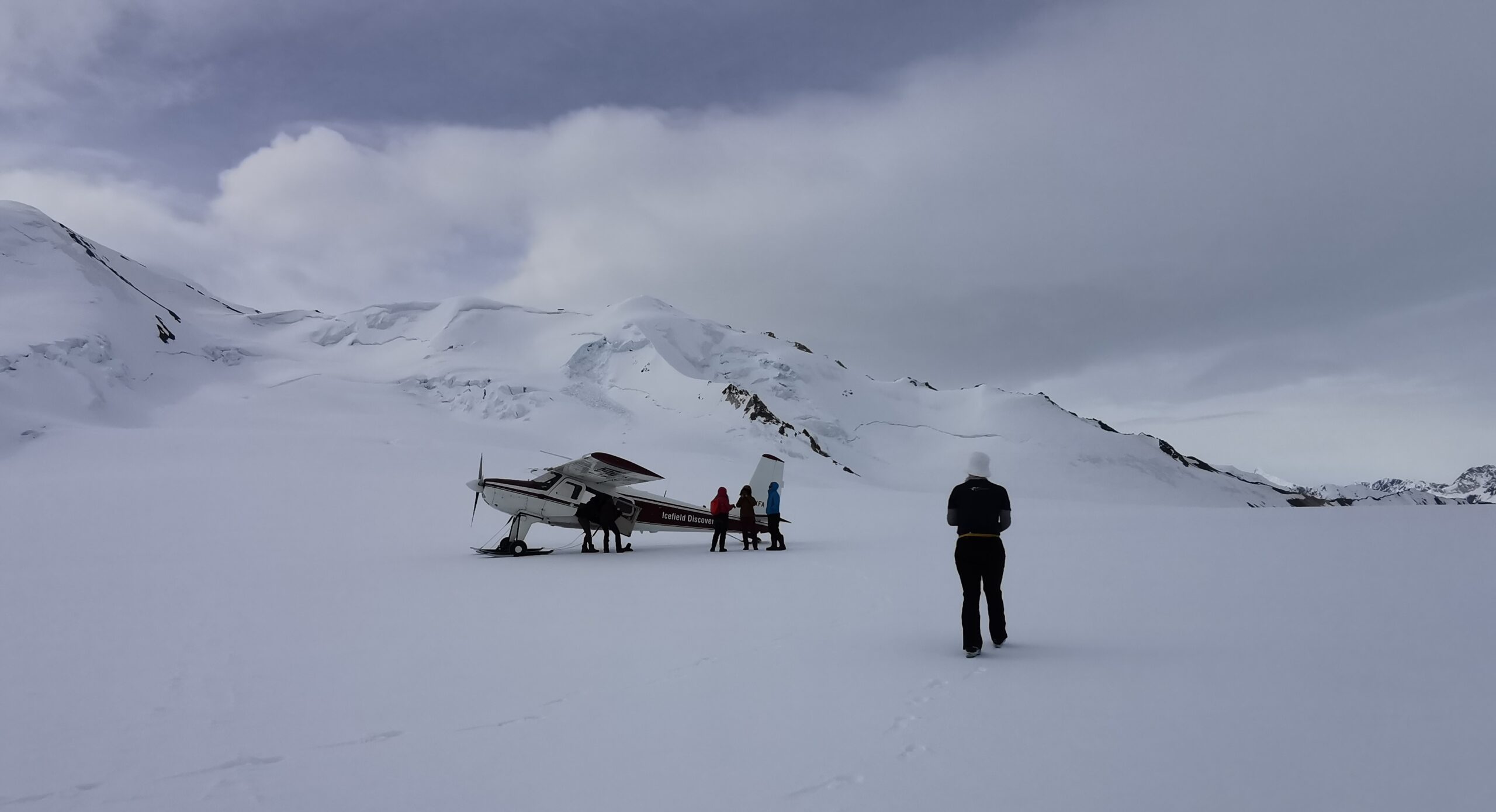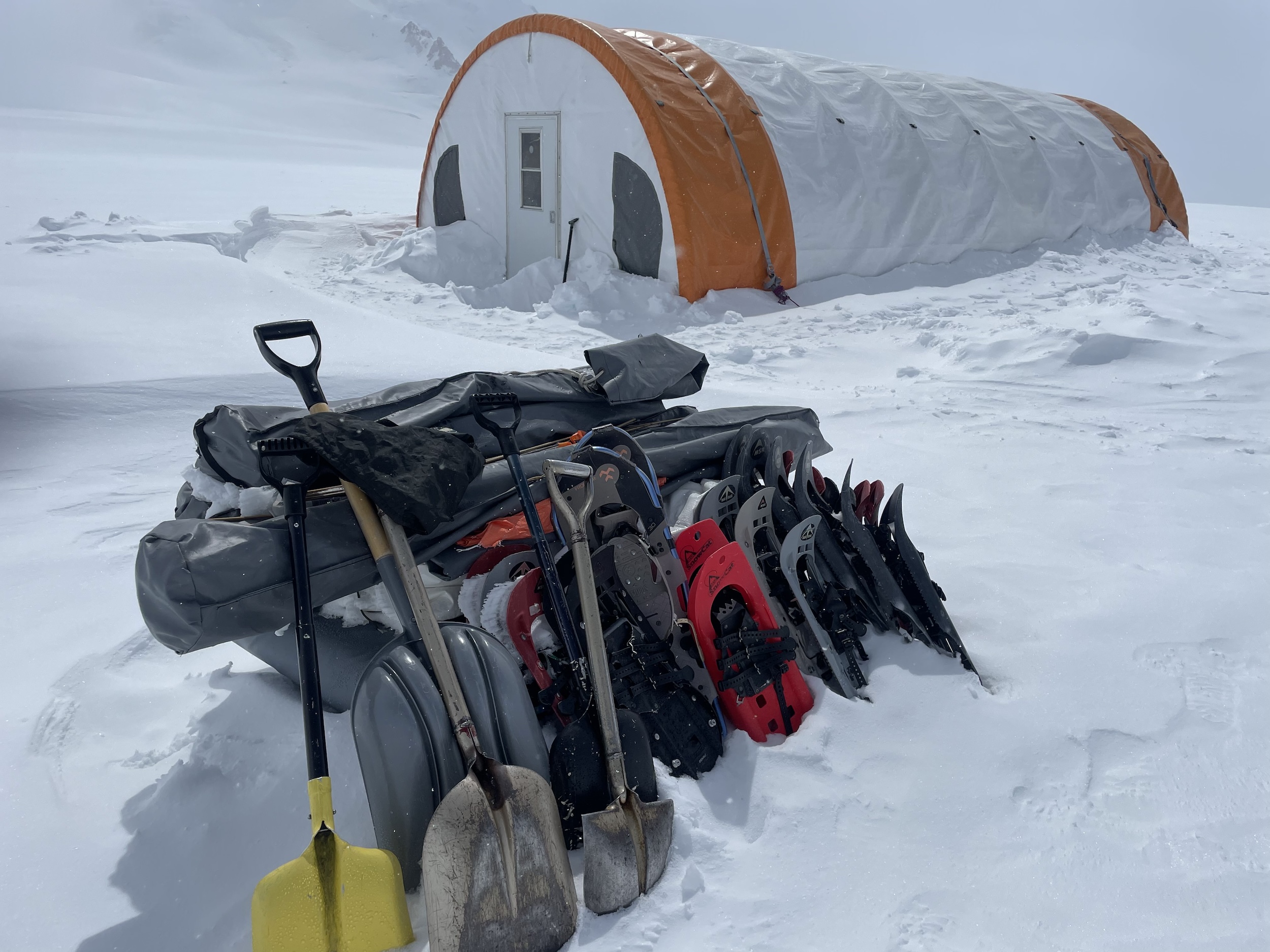NORTH STARS:
Gender Equality
Carbon Footprint
Wildlife & Ecosytems
“For more than two decades, Williams has overseen flight-seeing trips to the icefields, where only researchers and mountaineers had previously ventured.”
“Glaciers are rivers of ICE! Ahtohallon is frozen! I hear you, and I’m coming,” Elsa declares in Frozen 2, setting off to uncover her ancestors’ secrets. While I wasn’t seeking ancestral revelations—since none of my forebears had ever ventured to the Yukon Territory—I was headed to see glaciers. My destination: Kluane National Park and Reserve for a cross-country skiing and yoga retreat. This was no ordinary getaway, but an expedition into one of the most remote regions of Canada.
Candace Dow, the owner of Northern Nomad Outdoors, designed the “glacier flow” experience as a blend of yoga and skiing that takes participants into the high-altitude wilderness. Dow emphasizes that her trips are for those seeking personal growth and a challenge. Yoga complements skiing by easing sore muscles and helping the mind stay focused.
Dow’s heritage as Cree and Métis deeply influences her approach. The Cree, originally from the Hudson Bay area, migrated westward centuries ago, while the Métis descend from European settlers and Indigenous peoples. “My Cree/Métis ancestors lived harmoniously with the land,” Dow says, and through her nature tours, she seeks to follow in their footsteps.
Soon, I’d be following Dow’s footsteps.

The group of intrepid women. Image Courtesy of Northern Nomads.
Exploring Kluane’s Majestic Terrain
The bi-national Kluane/Wrangell-St. Elias/Glacier Bay/Tatshenshini Alsek park system earned UNESCO World Heritage status in 1979 for its large span of glacier-filled landscapes and icefields. The parks also boast an impressive population of grizzly bears, caribou, and Dall sheep.
Relatively unknown to the traveling public, Kluane National Park received 50,000 visitors per year before the pandemic – a fraction of the 500,000 who visited Denali National Park and Preserve in Alaska before the pandemic.
Our group was set to fly up to the icefields, located 8,500 feet above sea level at the convergence of the Logan, Kaskawulsh, and Hubbard glaciers. These glaciers cover 80% of Kluane, though the park’s glaciated areas have diminished by 20% in the past fifty years due to climate change. The chance to see this frozen wonderland before it further recedes is a unique part of a visit to Kluane National Park.
Journey from Whitehorse to Kluane
Nine adventurous women, including me, gathered in Whitehorse, Yukon Territory’s capital, home to 35,000 people. From there, we drove westward for two and a half hours to reach Kluane. For the first two days, we practiced yoga and explored the sunlit valleys near the cabins at lower elevations. Inclement weather delayed our ascent to the icefields, as our pilot deemed the conditions too unsafe to fly.
On the third day, the skies finally cleared. From a small four-seater plane, we ascended into the vastness of the mountains, with Mount Logan, Canada’s highest peak, coming into view. As sunlight illuminated the snow-covered slopes, we landed in a seemingly endless white expanse, where we would camp for the next 48 hours.
Sian Williams, the seasoned owner of Icefield Discovery, greeted us upon arrival. For more than two decades, Williams has overseen flight-seeing trips to the icefields, where only researchers and mountaineers had previously ventured. She briefed us on camp life—no cell service, strict leave-no-trace policies, and rudimentary “facilities.”
After setting up our bright orange tents in the stark snowfields, we shared a meal in the main tent, a sturdier semi-permanent structure used for gatherings. That afternoon, we embarked on our first cross-country skiing expedition, which for me involved frequent falls and a lesson in humility. The shifting weather reminded us of nature’s unpredictability, as moody clouds rolled in just before our evening yoga practice.

Skiing in a storm. Image Courtesy of Northern Nomad Outdoors.
Life on the Icefields: Camping and Skiing at High Altitude
That night, our group bonded over pasta and wine, sharing stories against the backdrop of the endless daylight—the solstice meant nearly 18 hours of sunshine in this northern latitude. Williams shared how she had hosted 80-year-old Japanese “experience-collectors,” modifying the skiing activities to accommodate their fitness levels. She took pleasure knowing that even determined elderly travelers could enjoy the area’s natural beauty.
We retired to our tents in the pale glimmer of twilight. Sleeping proved challenging. The hard-packed snow beneath my mat and tent, combined with the thin air and high altitude, made for restless nights. Though uncomfortable, I reminded myself that I could endure anything for 48 hours and pressed on despite the lack of sleep.
On the second day, a storm split the group—some ventured into a snowy storm to ski, while others stayed behind to warm up with yoga and more wine.
When the sun returned, we bonded as a group, doing silly things adults rarely indulge in like building a human pyramid and playing in snow while marveling at the dazzling white-scape surrounding us.

Plane to the Icefields. Image courtesy of Northern Nomad Outdoors.
Why Kluane National Park Is a Top Adventure Destination
The Yukon Territory is one of three territories in Canada. Together, these three territories contain 40 percent of the nation’s landmass, but only 3 percent of its population. Its peaks, including Mount Logan at 19,550 feet, dominate the landscape, and the icefields we explored are the world’s largest non-polar ice masses. Stretching nearly nineteen miles long and thousands of feet deep, these glaciers feed into a vast network of icy rivers. The knowledge I was one of few civilian travelers ever to see this singular place, suddenly struck me on the flight back.
At that moment, Robert Service’s poem “The Spell of the Yukon” echoed in my mind. Much like those who sought fortune during the Gold Rush, we too had been “bewitched” by the spell of this extraordinary land.
Story by Cristina Slattery
Cristina Slattery is a freelance writer who has contributed to publications ranging from the Wall Street Journal to AFAR.com, the NYTimes, BBC Travel, Travel + Leisure, and a variety of other websites. She lives and works in the New York area and hopes to publish her first novel, a fantasy for kids 10-12, in the near future.



